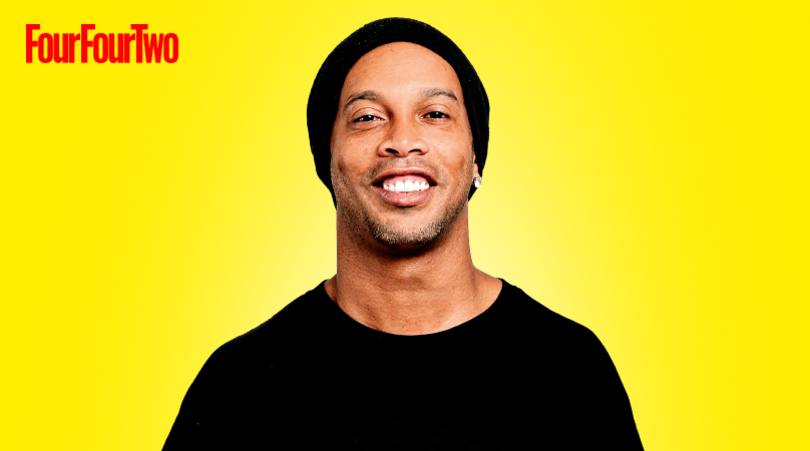Meet the drunkest footballer EVER: Breakfast booze, night-long sessions and pre-game liquor
1960s Yugoslav legend Stef Lamza had it all – including an unparalleled appetite for alcohol. But while fans adored him for it and his club tolerated it, it ultimately proved his undoing
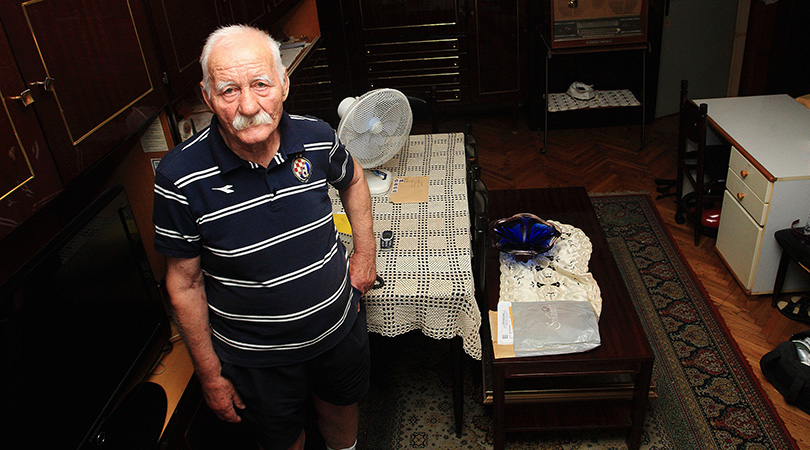
These days only bare walls are left of the Vila Rebar, one of the most mythical places on the outskirts of Zagreb. Situated on the Medvednica mountain overlooking the city, it was once a retreat for Ante Pavelic, leader of the Croatian fascist puppet-state in the Second World War.
Later it became a popular destination for hikers and housed a restaurant which remained famous until 1979, when fire swallowed all of its wooden fixtures and fittings, leaving only foundations and the basic stone structure at the mercy of weeds and graffiti artists.
But 12 years earlier, it was also the site of the most surreal accident in Croatian football history.
On a lovely morning in June 1967, the Vila Rebar guests were enjoying the sunshine and fresh air on an open terrace. However, this wasn’t a typical day for the people of Zagreb. The night before, their beloved Dinamo had done what had seemed impossible: after losing the first leg against Eintracht Frankfurt 3-0, they defeated the Germans 4-0 to reach the final of the Inter-Cities Fairs Cup.
There awaited Don Revie’s mighty Leeds United. But the two final legs had been scheduled for late August and early September, so Dinamo had more immediate concerns – there were three more league matches to be played, and the Blues were title contenders. Over coffee or spritzer, people on the restaurant terrace discussed Dinamo’s chances. If they beat FK Sarajevo and won at least one of the remaining two away games, they would win the trophy that had eluded them for nine years.
Causing commotion
Could he do without the Zagreb nightlife, which made him even more of a city icon than his on-pitch achievements?
Surely the team, re-energised after this fantastic, improbable win against the Germans, could do it? They had the best players – including Stjepan ‘Stef’ Lamza, the genius playmaker. Jack Charlton surely couldn’t stop him, let alone any defender in the Yugoslav league.
The best features, fun and footballing quizzes, straight to your inbox every week.
Lamza produced a magical display against Eintracht and the newspapers were full of praise for him. There were also rumours he’d leave for Inter, Milan or Barcelona. But could he do without the Zagreb nightlife, which made him even more of a city icon than his on-pitch achievements?
“Suddenly, there was all this commotion,” says Zvonko Orsag, an eyewitness at the Vila Rebar. “A man fell from the balcony upstairs onto the table next to where I was sitting. He hit it with his shoulder, rebounded off it and banged his head on the ground. We all jumped from our chairs.”
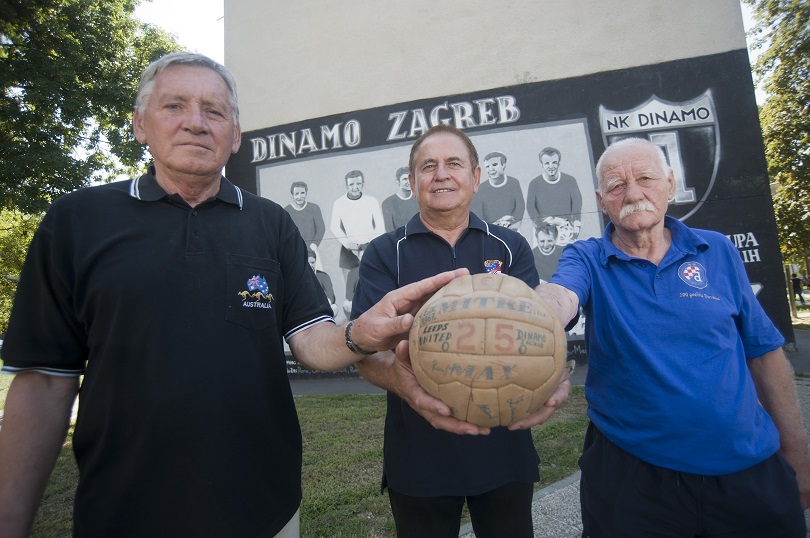
The man appeared conscious, but he wasn’t moving and his head was covered with blood. Every one of the terrace were horrified when they recognised his face. It was Lamza himself. His eyes were blinking uncontrollably and he reeked of alcohol.
It wouldn’t be the last time Dinamo were affected by their players’ drinking culture. In 2013, their Brazil-born fantasista Sammir spent the night in police custody when he was apprehended for driving drunk as a skunk the morning after partying all night.
In 2012, defender Domagoj Vida was thrown off the team bus for casually opening a can of beer in front of his coach.
There are many more examples from previous decades. One player was found intoxicated and passed out in his doorway before the team was due to depart for an important match. Another bragged to journalists: “I drank half of the city’s booze...”, while one player urinated in front of reporters on leaving the team bus at an away match.
"I was afraid"
But all that is nothing compared to what was happening in the 1960s, when Dinamo were a riot squad and won their only piece of continental silverware. Their story is soaked in alcohol and almost all anecdotes begin and end with Stef Lamza: probably the most boozed-up player of all time.
Born in 1940 in Sisak, 35 miles south-east of Zagreb, Lamza came to Dinamo as a 20-year-old. The team had just won the Yugoslav Cup and narrowly lost the title to Red Star. They also had Marton Bukovi, the Hungarian coach famous for pioneering the 4-2-4 formation and developing the role of the deep-lying centre-forward.
“I was afraid,” Lamza tells FFT, his piercing and dramatic blue eyes staring from behind white eyebrows and white moustache.
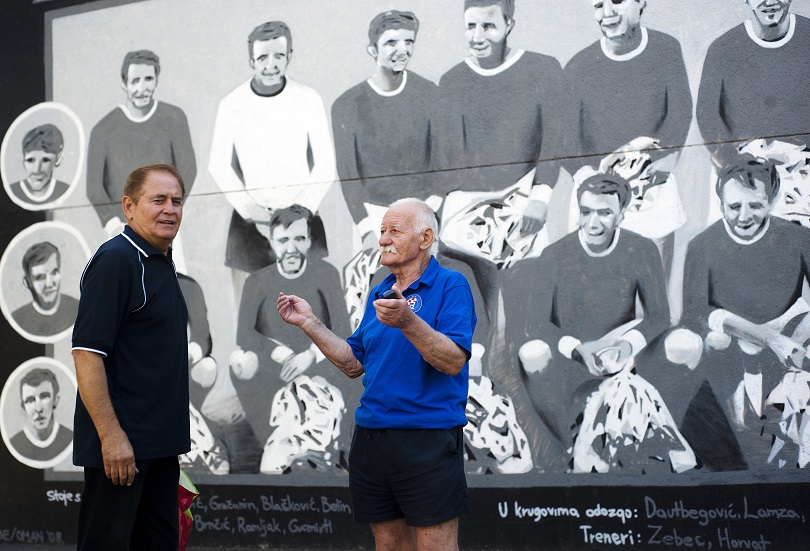
“To me, Dinamo players were like aliens – they were like these football gods and it took me a while to gather the courage and join them. They all had their rituals and I was left out as the youngest. I even had to knock on the door when I entered the locker room.”
The road to acceptance, it would seem, led through Zagreb’s bars and restaurants. It’s no secret that Dinamo players were, at that time, epic booze hounds, known as much for their all-night parties as they were for their football.
An urban legend has it that all taxi drivers had to drive them in reverse between two popular bars, because the players were keen to leave an impression: they were proud of their lifestyle and made little effort to hide it. And the fans appreciated them for it – the Zagreb crowd always preferred bohemian characters who played beautiful, technical football.
Going hard over home
There were stories of Lamza drinking two litres of hard liquor before one match or hiding in the cellar of his favourite bar ‘Splendid’ when Dinamo sent someone to bring him to practice
Lamza’s outrageous off-pitch reputation later overshadowed everything they did, but it’s clear that the drinking culture was there before he arrived. He will never blame peer pressure or reveal names of his accomplices in particular events, though he was rarely alone.
By late 1961, Lamza not only rose through the ranks to earn a place in the starting line-up, but also became part of the ‘hip’ Zagreb crowd. When Dinamo played Barcelona (in the return leg of the Fairs Cup, having lost the first match 5-1) just before Christmas, he showed up at the Maksimir Stadium just 10 minutes before kick-off. He was hammered.
“That day, a team-mate and I made an early start in one cafe near the ground,” Lamza recalls. “We’d been drinking since before lunch. Then he started feeling unwell and I told him he needed to stop. So he left – they later found him sleeping on the street. I stayed, although I was aware the people from the club were probably looking for me all over the city by then. In the end I showed up just in time and scored two beautiful goals in that match that we drew 2-2.”
This became a recurring pattern. There were stories of Lamza drinking two litres of hard liquor before one match or hiding in the cellar of his favourite bar ‘Splendid’ when Dinamo sent someone to bring him to practice. One time, he was so wasted that he didn’t know where he was or who he was playing. “We were standing in the tunnel, preparing to enter the pitch,” says Rudi Belin, a great defender of the ’60s.
“I was concentrating, thinking about the player I was required to mark when Stef came to me and asked: ‘Who are we playing, mate?’ He was dead serious. The opponents that day were none other than Red Star Belgrade, and the match was played at their Marakana Stadium in front of 100,000 people. Lamza scored twice and asked the coach to take him off at half-time."
“I’m not sure Belin and I are talking about the same game,” says Lanza, struggling to recall the details. “But I did once score two against them at the Marakana and asked to be subbed off. I meant no harm, I just thought someone else should get the chance. Why should I play all the time? It didn’t seem fair to the others.”
Carefree he may be
Players had much more space and time at their disposal, so individual skill was of far greater importance
To Lamza, football was – above all – fun. And it showed on the pitch: his style was playful and entertaining, which made him a huge crowd favourite. He didn’t always play drunk (“Sometimes I was hungover,” he once joked), but by today’s standards he would have been judged a raging alcoholic and immediately sent to rehab. Dinamo tolerated his escapades to a much larger extent than they probably should have, but they knew what he was worth to them and were always afraid of losing him to their rivals.
Besides, these were the 1960s, when much of continental football was still very romantic and played at a slower tempo; players had much more space and time at their disposal, so individual skill was of far greater importance than it became after pressing and all-out running were fully adopted into the game.
Dinamo players’ touch and technique clearly weren’t affected too much by their lifestyle, because they were doing extremely well on the pitch. From 1963 to 1966 they appeared in four consecutive cup finals and won two (in 1963 and in 1965); they reached the Cup Winners’ Cup semi-final in 1961 and Fairs Cup final in 1963, when they lost to Valencia.

They also had five second-place and three third-place league finishes in that decade. Maybe they could have done even better if they had been more professional, but their bohemian character was a part of the charm.
Lamza regularly produced captivating displays. He also began receiving call-ups to the national team – but he wasn’t very keen on playing for Yugoslavia. “I saw some things I didn’t like,” he explains. “Some players were favoured over me and I was a misfit.
A couple of times, I made up a reason to leave. Once I even intentionally injured myself so that I could be sent back to Zagreb – I didn’t enjoy being part of that team and would much rather play five-a-side with friends in my neighbourhood.”
Although he was a big star, he only won seven caps for Yugoslavia.
Brandy with the boss
We had one, two, three, I don’t know how many... He could never hold his liquor well and first started teasing, then insulting me
In 1965, new coach Branko Zebec began implementing a more professional approach at Dinamo. He had a peculiar relationship with Lamza – criticising and blaming him publicly when things didn’t go well, but also praising him more than anyone else when Dinamo were winning. Zebec also tacitly approved of his star player’s ‘special’ status and allowed him more freedom than the others.
“We had several conflicts,” Lamza says. “But there was this one occasion that set the course of our relationship. As I drove him home after practice one evening, he said, ‘Pour us a shot of rakija’ [home-made brandy]. I refused, because we had a game tomorrow. But he was insistent: ‘Oh, come on, Stef,’ he said. So we had one, two, three, I don’t know how many... He could never hold his liquor well and first started teasing, then insulting me. I got mad and left before it got any worse. We never spoke about that night again. Never!”
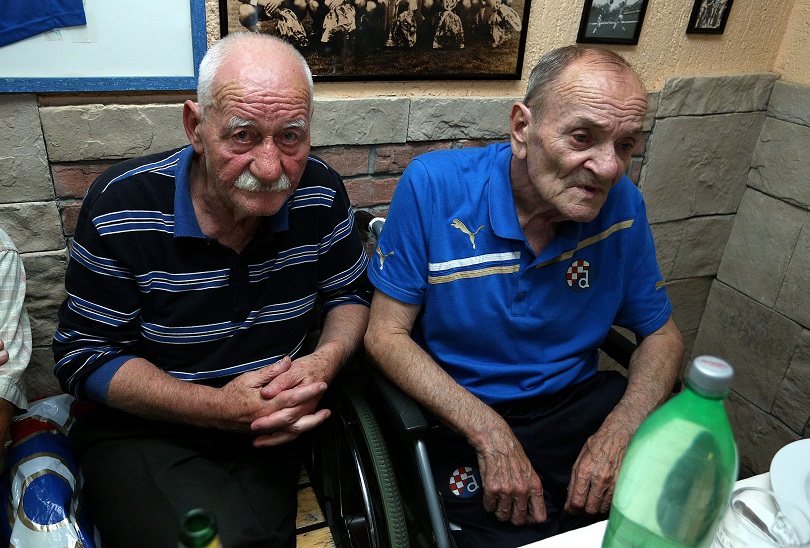
Zebec had been a talented manager, who later worked in Germany. He brought Bayern their first Bundesliga title in 1969 and took Hamburg to the 1980 European Cup Final. But he was also a very difficult character. Towards the end of his coaching career, he became infamous for his strict disciplinarian measures and extremely harsh training methods.
Players complained that he often insulted them and, as he started falling asleep on the bench during matches, the reason for his behaviour transpired. In 1988, he died of alcohol-related illness aged 59. Both Zebec and Lamza belong to a long line of Dinamo legends who struggled with the same demon. In 1967, they led the club to European glory together, but neither got to participate in the big final.
Dinamo scraped through the early rounds of the Inter-Cities Fairs Cup as the first side to benefit from two innovations. For the first time in the history of the competition – the predecessor to the UEFA Cup – replays were scrapped with teams going through on away goals, or by tossing a coin if they beat each other by identical results after extra time in the second leg.
Head turned
Moved by what he had heard from fans, he started rethinking his decision to leave
Dinamo first ‘cheated’ in the coin toss against Spartak Brno, as they started jumping in the air and celebrating before anyone could see which side it had fallen. Then they took advantage of the away goals rule as they beat Dunfermline 2-0, after having lost 4-2 in Scotland. They narrowly beat their Romanian namesake Dinamo Pitesti by a single goal in two matches, then thrashed Juventus 5-2 on aggregate. The Eintracht tie in the semis was their huge comeback.
On that magical evening in Zagreb, the crowd gathered outside the Dinamo locker room, chanting: “We’re not letting Stef go!” and “Dinamo is Lamza, Lamza is Dinamo!” What they didn’t know was that Stef Lamza had already agreed to join Standard Liege.
Later that night, the team gathered for a dinner party at the Vila Rebar. Moved by what he had heard from fans, he started rethinking his decision to leave. Standard were a strong and respected side, but hardly bigger in stature than Dinamo. They could only pay more money – much more, as professionalism was never officially introduced in Yugoslavia and payments were illicit. Always the misfit and uncomfortable in unfamiliar surroundings, he worried that he might not have what it takes to play abroad. But it was already a done deal and there was no coming back.
“We all had too much to drink that night,” Lamza says. “I couldn’t sleep in the morning, my head was a mess. I went downstairs to the bar – there was nobody there, but I found a bottle of rum and started drinking. By the time my team-mates woke up and came down for breakfast, I had drunk the whole bottle.”
Karlo Zagar, Dinamo’s physio at the time, recalls: “It was around 10am when guests started arriving at the Vila Rebar. They were observing Lamza and laughing at him.”
As one group of players and coach Zebec left for the Maksimir Stadium to train, others stayed for a massage. Zagar convinced Lamza to retreat to his room and try to get some more sleep; he also asked one of the maids to lock him in.
Brush with death
But Lamza couldn’t sleep. He soon woke up and, after realising the room had been locked from the outside, tried to use the balcony. Still drunk, he didn’t see the sign warning the balcony was out of use, as its wooden floor was rotten. As soon as he stepped out, he fell right through it and onto the terrace where people had been discussing his genius.
Doctors managed to save his life, but the centre of balance in his brain was permanently damaged, which meant he couldn’t dribble anymore. His transfer to Standard fell through, and he wouldn’t play for Dinamo again either – except in his farewell match against Benfica in 1970. He also played for three other clubs, but he wasn’t anywhere near his former self.
Without him, Dinamo were beaten by Rijeka and they drew with Sarajevo, losing their title challenge to them. When the big clash with Leeds came, Zebec was already at Bayern and Lamza confined to a hospital bed. Their team won 2-0 in Zagreb and drew 0-0 in Leeds. Listening to the match live on his transistor radio, Lamza said he felt “magnificent”.
These days, Lamza is living off a life-long pension from Dinamo Zagreb and still drinking, but “less than before”. He’s regularly voted the club’s best ever player in polls.
“I led an easy, comfortable life,” he tells FFT. “I saw the world and squandered everything I earned, but I’d do it all again – if only I could avoid that Vila Rebar incident. But I was really drunk and don’t remember much of what happened.”
This feature originally appeared in the November 2013 issue of FourFourTwo. Subscribe!
You must confirm your public display name before commenting
Please logout and then login again, you will then be prompted to enter your display name.
